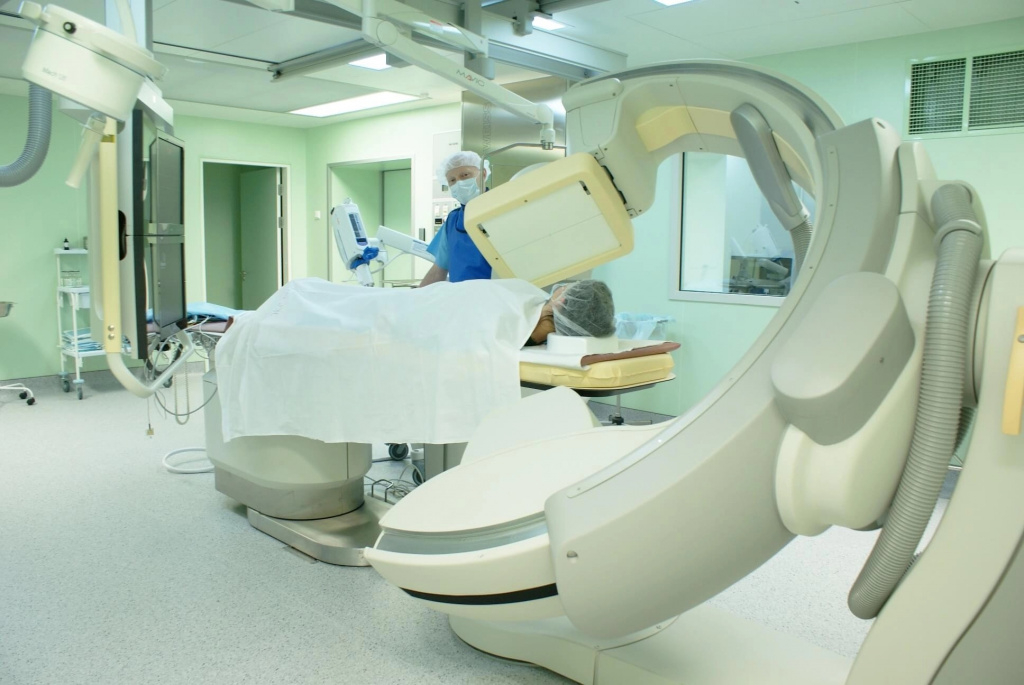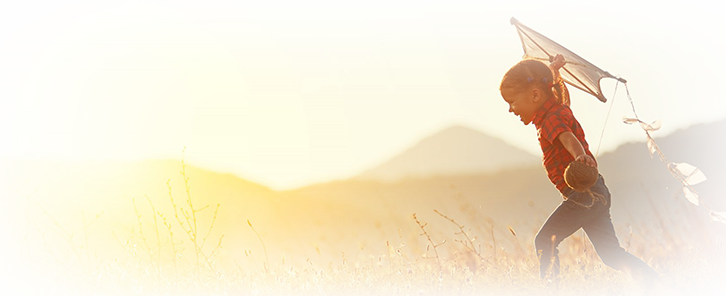Angiography
 The cause of many diseases of internal organs is vascular pathology. Disruption of their conduction leads to inadequate blood supply and tissue nutrition, which immediately affects a person's health and well-being. The dangers of vascular disease in its early stages are related to its asymptomatic course and the problem can only be realized after serious complications have been detected. Standard examination methods do not always provide comprehensive information on the condition of the blood vessels. That is why aortic angiography, a diagnostic technique that allows doctors to see and assess the vessels of the brain, heart and limbs, is quite widespread. Practical experience has repeatedly proved the usefulness of this diagnostic procedure and the possibility of using it for patients of all ages, with the guarantee of objective and accurate results.
The cause of many diseases of internal organs is vascular pathology. Disruption of their conduction leads to inadequate blood supply and tissue nutrition, which immediately affects a person's health and well-being. The dangers of vascular disease in its early stages are related to its asymptomatic course and the problem can only be realized after serious complications have been detected. Standard examination methods do not always provide comprehensive information on the condition of the blood vessels. That is why aortic angiography, a diagnostic technique that allows doctors to see and assess the vessels of the brain, heart and limbs, is quite widespread. Practical experience has repeatedly proved the usefulness of this diagnostic procedure and the possibility of using it for patients of all ages, with the guarantee of objective and accurate results.
Indications
The list of indications for angiography is quite broad and covers almost the entire spectrum of diseases of the brain, limbs and cardiovascular system. This confirms the importance and necessity of this diagnostic procedure, especially in the early asymptomatic stages of serious body pathologies.
- The list of indications for cerebral angiography includes conditions such as angiomas, aneurysms, ischaemic and haemorrhagic strokes, consequences of brain injury, tumors and haematomas. Each of the above conditions requires accurate identification of the location of the pathology, its possible complications and the degree of its development.
- Angiography of the neck, lower or upper limbs is indicated in patients with suspected atherosclerosis, parietal thrombosis, thrombosis and thrombophlebitis, dissecting aneurysms and in persons with probable damage to major limb vessels. The examination reveals vascular deformity and destruction, the shape and duct of the blood vessels, the risk of complete blockage of the vessel or other pathological conditions.
- Coronary angiography is recommended for patients with heart attack, coronary heart disease, atherosclerosis and congenital vascular abnormalities. In addition, the patient is referred for an examination before a planned surgical procedure to clarify its effectiveness in the particular case.
Contraindications
There are limitations to the diagnosis of vascular disease by angiography related to the following conditions of the patient:
- acute period of infectious and inflammatory diseases;
- mental health problems;
- heart, kidney or liver failure;
- blood clotting disorders;
- thrombophlebitis;
- pregnancy;
- high risk of allergic reactions.
Angiography in any of the above conditions can cause a dramatic deterioration in the patient's health. Doctors therefore choose an alternative method of examination: a magnetic resonance imaging or an ultrasound scan. In some cases, doctors decide to postpone the procedure.
Doctors





Where can you get an angiography with contrast in Moscow?
You can make an appointment with specialists at JSC “Medicine” (Academician Roitberg Clinic) on the website. Its interactive form allows you to select a doctor by speciality or find a doctor of any department by first name and surname. Schedule of every doctor contains information about their working days and hours available for patient visits.
The clinic administrators are ready to make an appointment or call the doctor at home by phone +7 (495) 126-28-11.
We are conveniently located in the Central Administrative District of Moscow (CAD) - 2nd Tverskoy-Yamskoy Lane, building 10. This allows our patients to quickly get to the clinic from the underground stations "Mayakovskaya", "Novoslobodskaya", "Tverskaya", "Chekhovskaya" and "Belorusskaya".
What is a vascular angiography of the extremities or the brain?
The term "arterial angiography" implies a contrast radiological examination, which allows the following parameters of blood vessels to be assessed:
- structure and condition of the tissues;
- vascular location and conduction;
- blood flow features;
- arterial branching and other parameters of interest.
Compared to other vascular diagnostic techniques, contrast angiography is unrivaled. The use of high-precision equipment and interpretation of the results allows us to obtain comprehensive data confirming or refuting the preliminary diagnosis. The procedure can be prescribed by any specialized doctor, from cardiologist and surgeon to oncologist and neurologist. This ensures a timely and accurate diagnosis for the subsequent development of a treatment course.
Angiography preparation
Preparatory activities are of particular importance. Strict adherence to the doctor's instructions makes the examination easier and ensures high accuracy of the results.
- During the counseling and examination stage, the doctor takes the patient's medical history, specifies a list of possible contraindications and selects contrast agents to illuminate the vessels. If the patient is allergic to iodine, the procedure may be abandoned in favor of another diagnostic method.
- Preliminary examination includes a fluorography, general and biochemical blood tests, a STD test, a coagulogram and clarification of Rh factor and blood group. The patient also undergoes a heart ultrasound and other tests depending on the underlying disease.
- Two weeks before angiography a patient must avoid taking alcohol and blood-thinning medications.
-
The day before the examination a patient should cleanse his/her bowel, take a shower, remove the hair at the puncture point, take the recommended tranquiliser and antihistamines to reduce the risk of an allergic reaction to the contrast agent.
- On the day of the examination a patient should avoid eating and drinking any liquids in order to avoid nausea and vomiting when injecting the contrasting agent. The bladder should also be emptied.
Some special measures are indicated for patients with serious heart and vascular disease:
- In case of hypertension, blood pressure should be normalized with the help of suitable medications recommended by the doctor.
- Potassium or glycosides are taken if the heart rhythm is abnormal.
- Nitrates are taken for ischemia.
- For chronic inflammatory diseases, a course of antibiotics is given in advance.
- In case of kidney disease, the patient should drink a significant amount of water to facilitate the elimination of the contrasting agent from the body.
Angiography procedure
The general scheme of the examination is described below:
- During the preparatory phase, the puncture site is treated with anesthetic.
- An incision is made in the skin to access the artery. A conduit tube with a catheter inside is inserted, through which a contrast agent is injected. The correctness of the procedure is monitored with X-rays.
- The body section is photographed according to the referral.
- After the procedure is completed, the catheter is removed and a tight dressing is applied to the place of its insertion.
Some particularities of scanning various vessels are related to their location:
- For angiography of the brain, the catheter is inserted into the femoral, brachial or subclavian artery. The scans are taken in different projections immediately after the injection of the first portion of contrast agent. Repeated injections are necessary to study distant vascular areas. The third series of images (scans) is taken after the appearance of contrast in the veins.
- For coronary angiography (coronarography), contrast is injected into the femoral or radial artery. The catheter is inserted, monitoring its progress on the X-ray machine. Contrast is directed to both the right and left arteries. The scan is taken after the blood vessels of the heart muscle are filled with contrast. At this point, patients may experience fever, dizziness, coughing or nausea and heart palpitations.
- When examining the limb vessels, contrast is injected into the abdominal, femoral or brachial artery. Once all the vessels have been filled with the substance, a series of scans are taken, for which special X-ray tubes are used. They are arranged perpendicularly and are switched on at regular intervals. During the examination, the patient may briefly feel a fever and some metallic taste in the mouth.
After the procedure
Bed rest for 6-10 hours is recommended to avoid the formation of multiple blood clots.
Side effects
After the procedure, the patient may experience an allergic reaction to the contrast agent, cardiac arrhythmia, renal dysfunction, bruising at the puncture site or slight bleeding. A resuscitator, who is present during the angiography, will help to monitor the situation and take appropriate measures. After a maximum of two days from the examination, all patients return to their normal routine.






